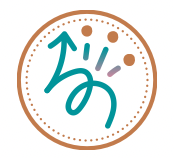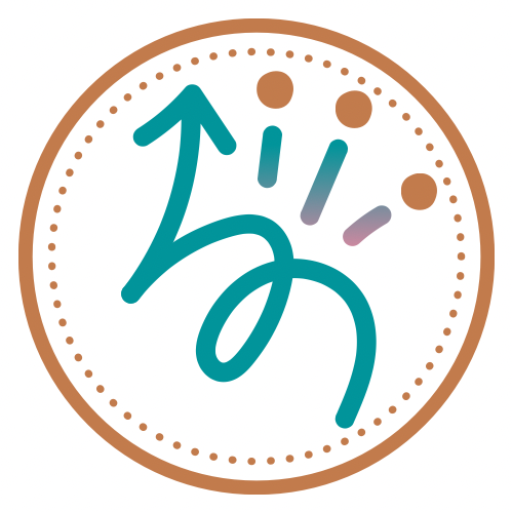Bilateral Coordination
This resource discusses bilateral coordination skills, the importance of this upper body skill, and how occupational therapy can help. In addition, check out the indicators of bilateral coordination differences and how those can affect daily skills such as dressing, play skills and school-based skills. Plus, 50+ easy to implement bilateral coordination exercises- no special tools or toys are needed.

This content is not intended as a sbustitute for medical advice, diagnosis, or treatment. Always seeks the advice of your physician, therapist, or other medical professional regarding a medical condition or treatment. This content is for informational purposes only. See full disclosure here.
All links in this post are non-affiliate links, and are provided for your convenience.
What Is Bilateral Coordination?
Bilateral coordination is the ability to use both sides of the body during an activity in a controlled and organized way. Also known as bilateral integration, this important skill is used throughout the day to preform both fine motor and gross motor tasks. Reading, jumping, riding a bike, cutting food on a plate, and buttoning a shirt all require the use of bilateral coordination skills.

Bilateral Coordination and Daily Activities
Bilateral coordination is an important life skill, and it is also pre-requisite skill needed for completing many gross motor and fine motor skills.
Gross motor bilateral coordination skills:
- Walking
- Running
- Jumping
- Riding a bicycle
- Participating in sports
- Jumping rope
Fine motor bilateral coordination skills:
- Tying shoes
- Writing
- Typing on a keyboard
- Buttoning a shirt
- Meal prep such as peeling potatoes or mixing a bowl of dough
- Scissoring
- Using a glue stick
3 Types Of Bilateral Coordination
There are three types of bilateral coordination skills: Symmetrical, reciprocal, and asymmetrical bilateral coordination. Let’s take a deeper look at each of these.

Symmetrical Bilateral Coordination
Symmetrical bilateral coordination occurs when both sides of the body perform the same movements during a task at the same time. For example, when performing jumping jacks, both the legs and arms are moving in an upward and downward position at the same time. In other words, both sides of the body are doing the exact same action, at the exact same time.
Additional examples of symmetrical bilateral coordination include:
- Jumping rope with two feet together
- Clapping
- Catching a ball with both hands
- Breaking dry spaghetti

Reciprocal Bilateral Coordination
During reciprocal bilateral coordination, both sides of the body work together in a rhythmic motion, but in an alternating pattern at the same time during a task. Reciprocal bilateral coordination can be seen when riding a bike, swimming, and while walking or running.
- Pushing the pedals of a bike
- Performing the breast stroke while swimming
- Scissors kicks in standing
- Walking or running
Asymmetrical Bilateral Coordination
Asymmetrical bilateral coordination occurs when both sides of the body work together to complete a task, but perform different actions or movements during a task. For example, when using scissors, the dominant hand opens and closes the scissors while the non-dominant hand acts as a support and moves or turns the paper. This skill is also seen when:
- Using a ruler to draw a straight line
- Writing while supporting the paper with the other hand
- Using scissors with one hand while turning the paper with the other hand
- Mixing a bowl of ingredients while holding the bowl with the other
- Peeling potatoes or carrots
- Knitting or crocheting
- Manipulating a zipper
- Playing with Legos
- Tying shoes

The Developmental Sequence of Bimanual Skills
According to Jane Case-Smith, the sequence of development for bilateral coordination:
- Bilateral hand use first develops asymmetrically around 3 months of age
- Symmetric bilateral hand use develops between 3 and 10 months of age when infants begin to grasp, reach, and mouth their hands and toys allowing their hands to be brought to midline.
- Around 10 months of age, an infant is able to separate their hand use by holding an object with one hand and manipulating it with the other.
- By 12-18 months, a child is typically able to clap their hands, bang object together, and place small objects into a container.
- At 17-18 months, toddlers now frequently use one hand to hold an object while manipulating it with the other, differentiating the hands.
- By 18-24 months of age, the child begins to refine their bilateral hand movements as they continue to develop their reach, grasp, release, and in-hand manipulation skills. During this time the visual perceptual system along with the cognitive and motor areas begin working together more simultaneously. This leads to improved motor planning known as praxis.
- Through play and exploring the environment, children develop their bilateral hand use in manipulating objects. And by 2 ½ years of age, children begin completing more complex two hand tasks such as cutting with scissors.
Bilateral Coordination and The Brain
The Cerebellum and The Prefrontal Cortex
According to the research study Coordination of Bimanual Movements, smooth, coordinated bilateral movements engage both hemispheres of the brain. The cerebellum as well as the prefrontal cortex are both activated when both sides of the body are used during an activity.
The Corpus Callosum
During bilateral coordination activities, both sides of the body need to communicate with each other, and do so through the corpus callosum. The corpus callosum is the bridge that connects the left hemisphere of the brain to the right hemisphere of the brain. Think of it as the brain’s communication pathway connecting both sides of the brain so that they can communicate effectively and efficiently.
Motor Skills and Academics
Bilateral integration is a sign that both sides of the brain are communicating effectively. According to the research study The Relationship Between Motor Proficiency And Reading Ability, “movement and physical activity is not only crucial to brain development but it has a positive impact on the ability to learn. Furthermore, exercise facilitates improved executive functioning (selecting and initiating goal-directed actions)” and enhances academic outcomes especially in reading, math and writing abilities. Good bilateral coordination skills improves the ability to use both hands together during school based tasks such as writing and scissoring. Furthermore, reading requires coordinated eye movements including tracking while reading, a bilateral integration skills.
Older Adult Bilateral Coordination
In the research article, Age-Related Changes in Bilateral Upper Extremity Coordination, states that “increased demands of bilateral coordination may magnify age-related bilateral coordination differences due to known cognitive declines with aging”. Furthermore, declines in complex bilateral coordination is a reliable indicator of mild cognitive impairment and Alzheimer’s from those with typical age-related cognitive decline. Declines in bilateral coordination can be seen in older adults.

The Sensory Systems and Bilateral Coordination
There are 5 basic sensory systems including sight, hearing, taste, smell and touch that we all learned about in school. The 3 lesser known sensory systems include the vestibular system, proprioception, and introspection. Here is a quick overview of the 3 lesser known sensory systems.
- Vestibular: The sensory system that processes information based on position, spatial orientation, and movement. The vestibular system is located in the inner ear and lets us know when we are spinning versus moving forward in a car, standing still, or walking up an incline even when our eyes are closed.
- Proprioception: The sensory system that processes information and receives feedback from our muscles, joints and body position as well as body awareness. This sense lets us know where are body parts are even with our eyes closed.
- Interoception: This sensory system helps to sense, interpret, and respond to signals from the body such as when someone is hungry or thirsty, heart rate, digestion, body temperature, if feeling nauseated or itchy, and when a bathroom break is needed.
Today we are going to focus on both the vestibular, proprioceptive, and tactile senses and how they relate to this important upper body skill. Let’s look into both of those senses a little deeper.

The Vestibular Sense
The vestibular sense plays a crucial role in bilateral integration as it provides the necessary information about body position, gravity, and movement. This sense is essential for using and coordinating both sides of the body effectively and efficiently during an activity. In addition, both the movement sense and bilateral coordination work together closely during bilateral tasks contributing to balance, posture, and muscle tone such a when performing gross motor tasks like kicking a ball or jumping rope.
Furthermore, this sense is also activated during sit down fine motor tasks as the vestibular sense processes information regarding body sway, postural movements, and head tilt.

The Proprioceptive Sense
Along with the vestibular sense, the proprioceptive sense also plays a major role in bilateral coordination. The feedback from the proprioceptive system provides information regarding body awareness (knowing where the body is in relation to other objects), motor control, and the amount of force needed during a task. This feedback is received through the muscles, joints, ligaments, and tendons.
Knowing where your body parts are without looking is important for coordinating movements when participating in a task.

The Tactile Sense
Lastly, the tactile sense along with the proprioceptive and vestibular as well as the visual sense integrate and work together to achieve optimal bilateral integration. The tactile sense allows us to explore our environments through the sense of touch. Through tactile sensory receptors, information is sent back to the brain about what we are feeling and touching including the texture, temperature, and the amount of pressure. Tactile receptors help guide the fingers when manipulating an object whether bilaterally or with single hand use. Differences in how an object feels can impact fine motor skills and bilateral hand use.
Indicators Of Bilateral Coordination Differences
Here are some indicators or red flags of bilateral coordination differences:
- Difficulty with daily tasks such as buttoning, zipping, or tying shoes
- Shows differences in the ability to use one hand to support the other such as during handwriting or scissoring tasks (holding the paper while writing or turning the paper while scissoring).
- Drops items often
- Differences in gross motor tasks such as catching a ball, riding a bike, or climbing stairs
- Uncoordinated movements
- Trips often
- Appears clumsy
- Difficulties using a knife and fork
- Difficulties with self feeding
*If you have concerns regarding bilateral coordination, fine motor skills, and/or concerns regarding sensory processing, contact your pediatrician to get a referral for an occupational therapy evaluation.
Concerns Regarding Bilateral Coordination and Occupational Therapy
If you have concerns regarding bilateral coordination skills, contact your medical provider for a referral for an occupational therapy evaluation. During the occupational therapy evaluation, the child or adult may be asked to perform various gross motor and fine motor tasks. These skills will evaluated on those skills in a fun and engaging way. The therapist will observe how they perform various bilateral coordination tasks. The therapist will also access bringing the hands to midline and crossing the midline through gross motor and fine motor activities.
Additionally for those with sensory processing concerns, the therapist may also ask the individual to participate in various sensory tasks to see the response to different types of movement and tactile sensations.
Contact your personal occupational therapist or pediatrician if you have concerns regarding bilateral coordination, fine motor, and/or sensory processing to get an occupational therapy evaluation.



Bilateral Coordination Activities and Exercises
Indoor Exercises and Activities in Standing
- Perform jumping jacks and push ups
- Play catch with a friend or family member, or toss a ball at an outdoor wall such as a garage door and play single-person catch.
- Perform airplanes with both arms straight out to the side, reach down across the body and touch toes with the right hand touching the left foot and vice versa.
- Practice standing scissor kicks or scissor steps with alternating arms and legs. Move your left leg forward while your right leg is back, and the right arm forward and the left arm is back, and switch alternating arms and legs. Do these at your own speed continuing to switch. (see picture above)
- With elbows positioned out to the side as if showing your muscles, touch one elbow at a time to the opposite knee while lifting the knee to meet in the middle. (see picture above)
- With a partner in standing back to back, pass the ball from side to side to each other. *This activity can also be done in sitting.
- With arms out to the side, move the arms in circles going the same direction. Then move arms in the opposite directions so one arm moves clockwise and one moves counter clockwise. *This activity can also be done in sitting.
- Participate in food prep as age appropriate such as peeling carrots, stirring a bowl of ingredients, shaking a closed container of salad dressing, cutting or shredding cheese, snapping asparagus, etc.
- In standing, place on foot directly in front of the other, walking on a straight line. Walk forward to at least 10 steps.
- Participate in animal walks such as bear crawls, slither like a snake, crab walk, or other animal walk of your choice.
- Participate in household chores such as folding towels, blankets, and clothing as well as sweeping the floor, making the bed, or organizing a cabinet.
- Dance
Bilateral Coordination Exercises and Activities in Sitting
- Ruler Art (see picture)
- With a partner or small group, copy body movements in sequence such as clap 3 times followed by tap head 1 time, tap floor with palms of hands 2 times, and end with clasping hands around knees. Vary the movements each time. Get as creative as you like with props as well.
- Toss or roll a ball from the sitting position.
- Create art using stencils. Don’t have stencils? Try making your own stencils designs using a thin piece of cardboard and scissors or an exact-o knife.
- Lacing activities (see the DIY version of lacing above using a thin piece of cardboard and a single hole puncher) and wrap yarn end with tape to avoid the ends fraying.
- Open and close various food containers
- Participate in food prep as age appropriate such as peeling potatoes, mix a bowl of ingredients, snap peas, break spaghetti noodles, shred cheese, roll out dough and use cookie cutters, etc.
- Use a rolling pin to roll out dough, or just use it as an exercise rolling it across a tabletop.
- Make a bracelet or necklace, or just string beads or dried noodles.
- Shoe tying
- Practice using scissors and moving and turning the paper
- Lying on your back, with you and a partner’s feet placed together in the air, move your legs as if riding a bicycle.
- Using a piece of cardboard with designated holes, place dulled ended screws and bolts and secure with hex nuts.
- Pinching, pulling, rolling or squeezing playdoh
- Play with Legos or other construction type toys
- Tear or crumple paper
- Complete a simple butterfly origami, see video by The DIY Therapist. Origami starts at 3:32.
- Play a clapping game, clapping using various rhythms and beats. Play with a partner and copy each other.
- Make sticker art
- Pull cotton balls apart to make cloud art or another art creation.
- Playing card games or other board games (click here for a tutorial for adaptive game card holders)



Outdoor Bilateral Coordination Games
- Zoom Balls
- Baseball
- Kickball
- Dodgeball
- Swimming
- Play frisbee
- Go for a bike ride
- Jump rope
- Feed sack race
- Roller skating
- Skip
- Ball games such as kick ball or play catch
- Create an obstacle course with items found around your home (things to jump, throw at a target, tunnels, buckets to throw balls or small bean bags in, paths to cross or jump, cones or rocks to weave, or even sticks to use for throwing, jumping, or moving a ball with on the ground.
- Play hopscotch
- Pick wild flowers. Pick the flowers using on hand and place in your other hand to hold.
- Walk across a balance beam (even one low to the ground such as a 2×4 placed on the ground to walk across)
- Practice walking across a balance beam, heel to toe with arms out to the side or on the hips for balance.
- Play hopscotch using sidewalk chalk
- Pop bubbles

Resources
- The research study, The Effectiveness of Motor Therapy on Motor Skills and Bilateral Coordination of Children with Intellectual Disability
- The research study, Age-related Changes In Bilateral Upper Extremity Coordination
- Research study, Coordination of Uncoupled Bimanual Movements by Strictly Timed Interhemispheric Connectivity (2011)
- The research study, The Relationship Between Motor Proficiency And Ready Ability In Year 1 Children: A Cross Sectional Study (2018)
- Jane Case-Smith’s Occupational Therapy for Children and Adolescents










